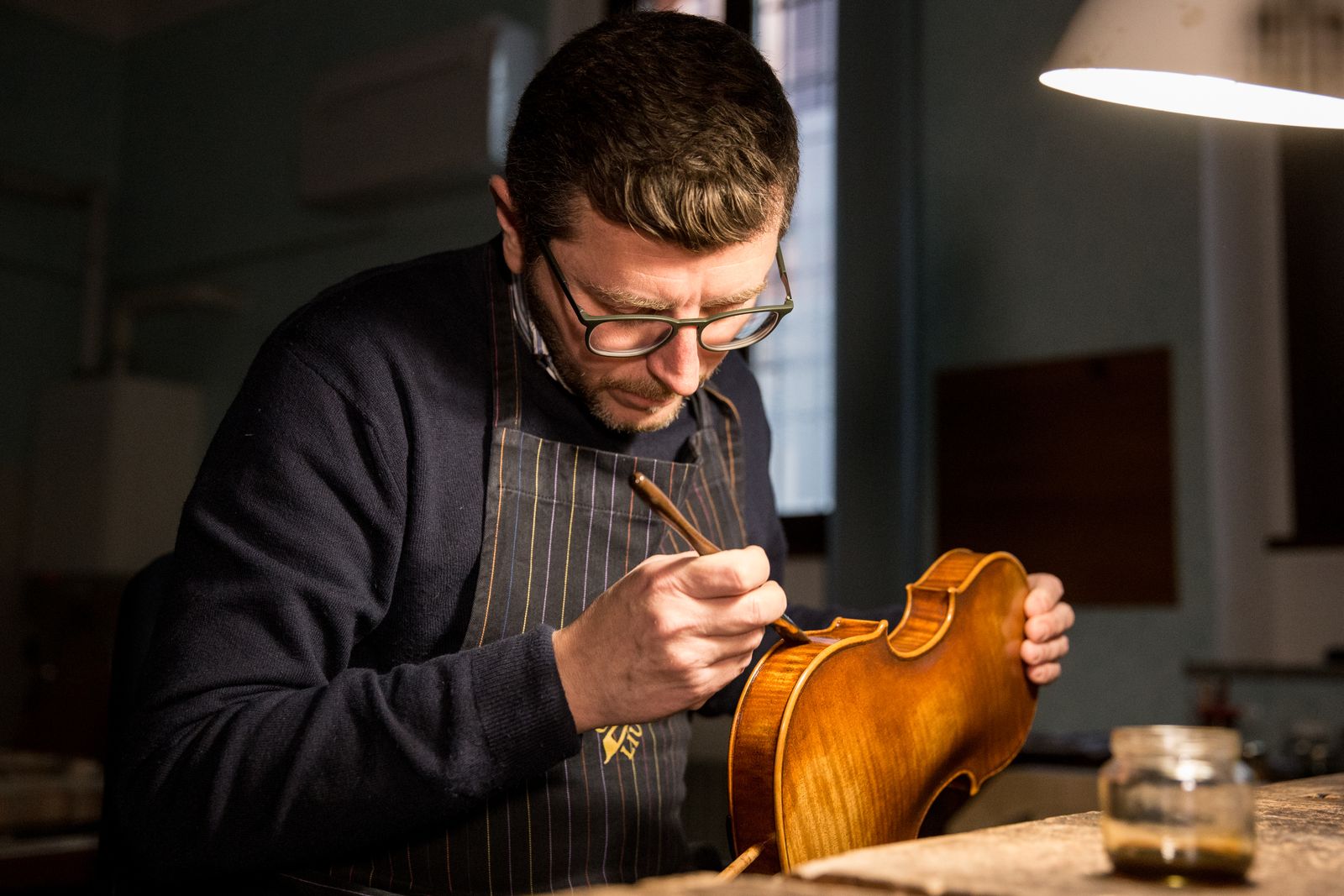Protected by the Stradivari Luthiers Consortium, which issues a certificate of origin with a SIAE stamp, endorsed by the Italian Luthier Association and UNESCO, the classical Cremonese school in the art of building violins, violas, and cellos, is the most famous in the world since the 16th century, and over the years, it has reached a very high level of technique and style, continually evolving in the pursuit of absolute perfection. The strictly artisanal technique of building what is called the “classical form” of the violin, or also the “internal form,” is such that two violins can never exist exactly alike.
The Violin Model and Its Construction
For the choice of the violin model to inspire me, I have always favored the works of the great luthier masters of Cremonese history, the historical Andrea Amati, Antonio Stradivari, and Guarneri del Gesù, and more recently, also the bowed instruments of luthiers like Giovanni Battista Guadagnini, are for me a source of inspiration following the demand of numerous clients. Once the instrument to follow is defined, the next fundamental step is the choice of wood to work with for the construction; the essence of wood – mainly the Balkan maple figured for building the back, sides, and neck, and the red spruce from Val di Fiemme for the soundboard – must meet specific requirements, primarily possessing characteristics similar to the antique instrument that inspires me. All stages of instrument construction require a lot of time and precision; wood is a living material and requires skilled and patient treatment. From the arching of the back and soundboard to their thicknesses, each step is studied to achieve the best acoustic result.
My Personal Touch
Despite the inspiration coming from tradition, there is a part of the violins, violas, and cellos that allows me, and all artisan luthiers, to express their creativity in stringed instrument construction, and that is the neck, which is ornamented at the top by the carving of the scroll. The scroll sculpture is the luthier’s personal imprint on the instrument, following the builder’s personal tastes and leaving room for the creative flair of us Cremonese luthiers. I thus draw inspiration from historical masters, but in this part, I can always leave my signature.

